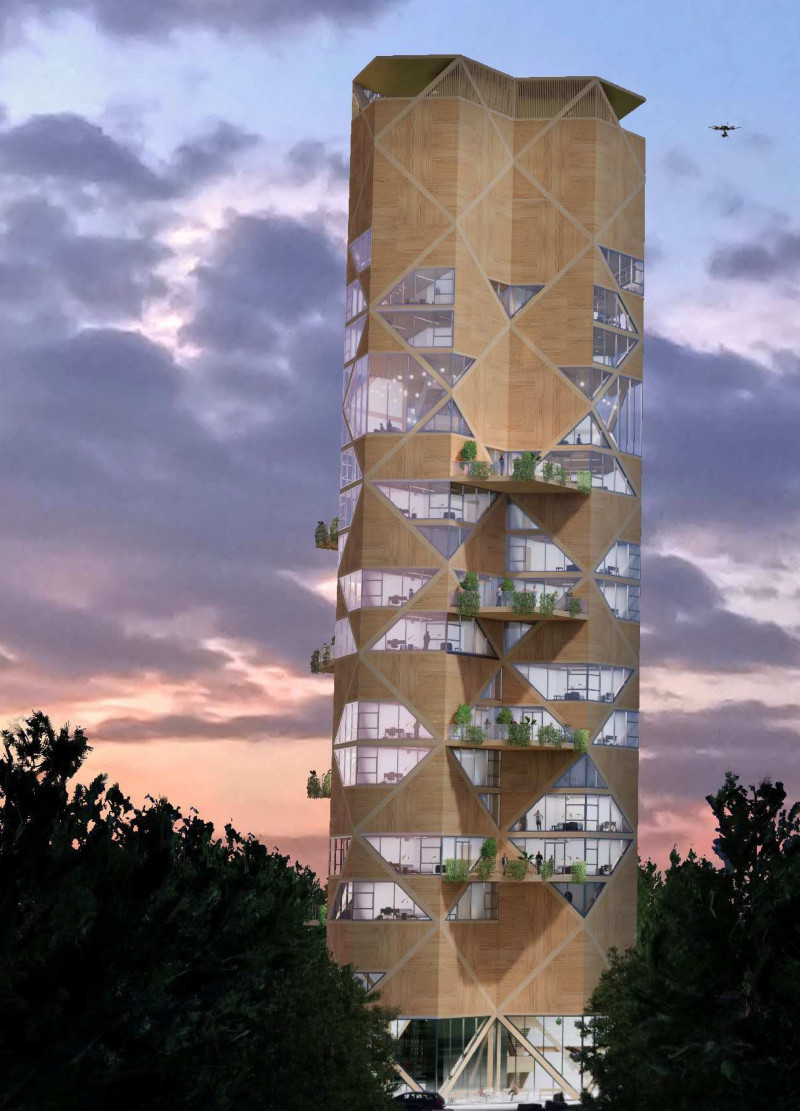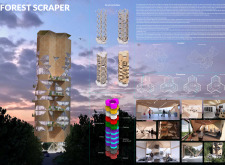5 key facts about this project
The Forest Scraper is located in ecological corridors of China and Sub-Saharan Africa, where it aims to meet the growing need for sustainable living and forestry management. The design functions as both a residence and a research facility focused on environmental stewardship. By embracing a modular approach, the structure creates a space that integrates dwelling and work, fostering the simultaneous pursuit of ecological awareness and community engagement.
Structural Organization
Designed around a central core, the building maximizes the use of vertical space. Living areas for staff are arranged in layers, offering personal rooms alongside shared spaces. This layout strikes a balance between privacy and community interaction. Communal areas are positioned on higher floors to provide expansive views of the landscape, allowing occupants to feel connected to their natural surroundings.
Functional Amenities
The structure includes important research facilities and observation areas that are vital for monitoring forest health and managing resources. By housing these functions within the tower, the design supports continuous engagement with forestry practices. This addresses the unique challenges faced by reforestation efforts in the green belt regions.
Sustainable Practices
The Forest Scraper features off-grid living amenities, such as systems for rainwater harvesting and greywater recycling. These aspects enhance the building’s self-sufficiency and support its sustainable goals. The incorporation of energy-generating systems further reduces dependence on external resources, aligning with contemporary ecological standards.
Material Choice
Engineered wood is a key material in the construction of the Forest Scraper, reflecting a commitment to sustainability. This choice not only provides structural strength but also helps minimize the project’s carbon footprint. Using engineered wood exemplifies responsible sourcing and helps to address some of the environmental concerns linked to traditional building materials.
At the top of the structure, a skyport facilitates the efficient delivery of supplies. This design feature also ensures minimal disturbance to the natural environment surrounding the tower. It emphasizes a blend of function and environmental consideration, reinforcing the project's overall goal of promoting sustainable forestry and community welfare.



















































